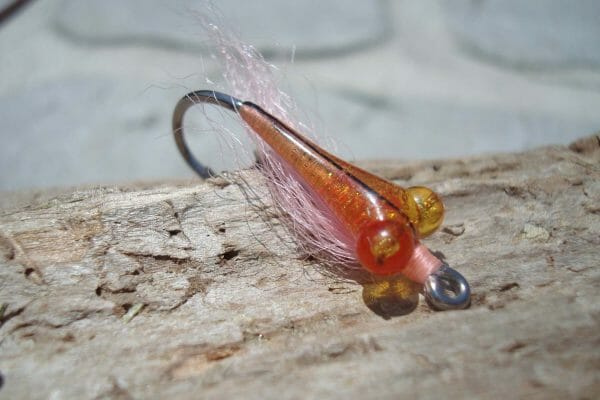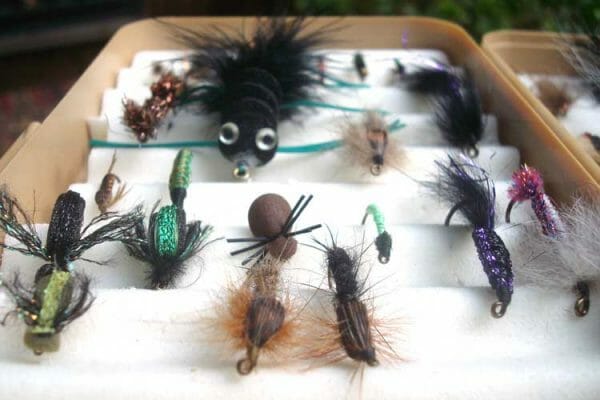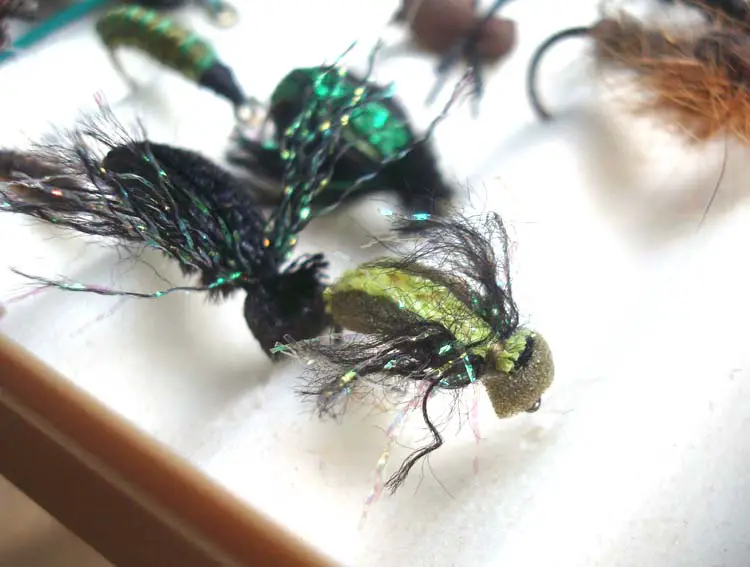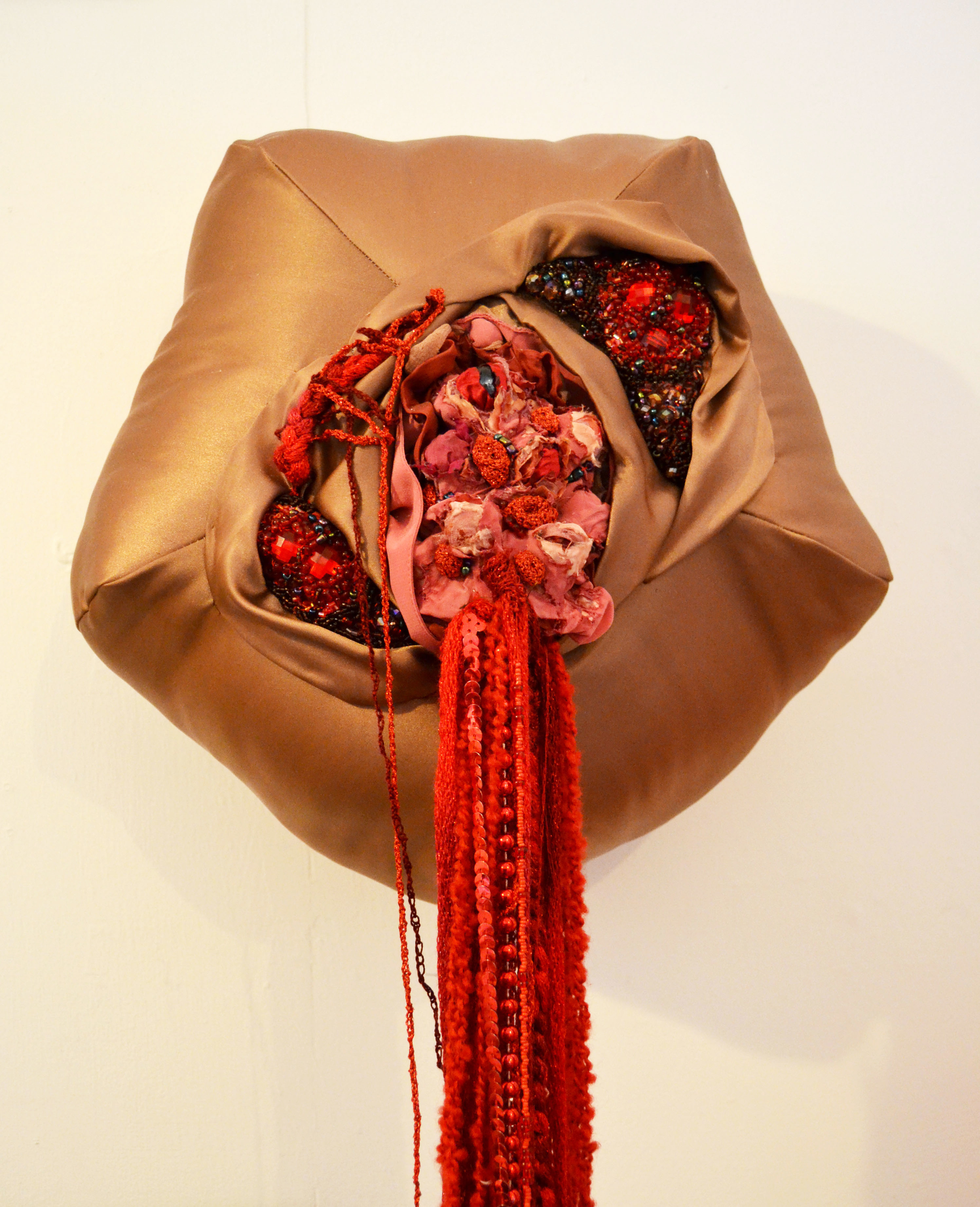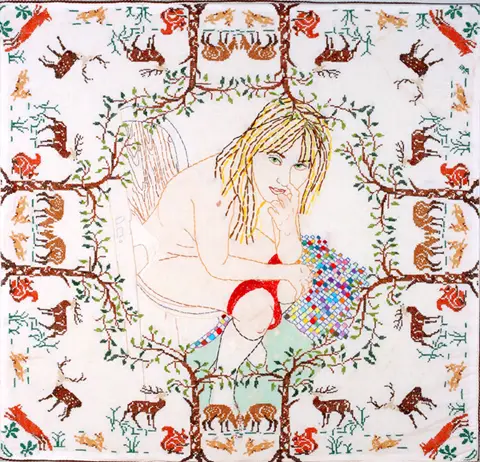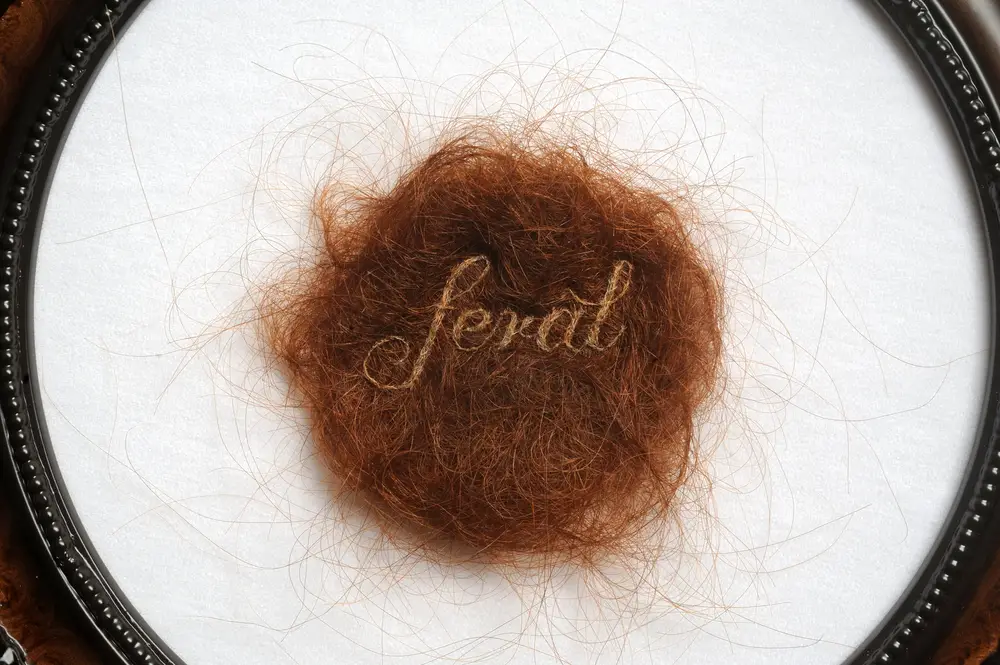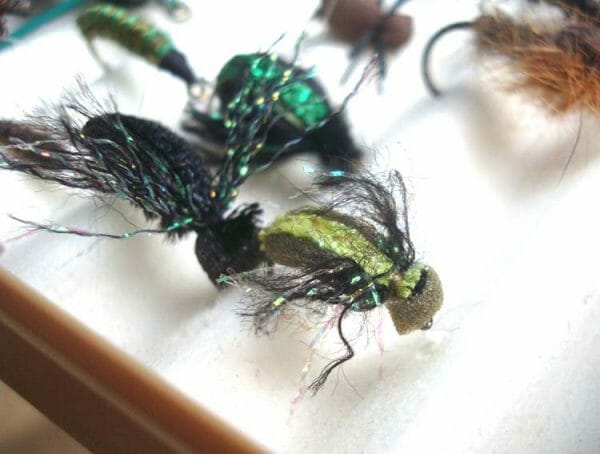
There’s a handwork technique embraced by men and women all over the world that is flying high right now. Using needlework threads and craft supplies to make minuscule sculptures, it’s as popular as I’ve ever seen. I’m talking about fly fishing lures. You may think they are simply sporting goods, but they are so much more: tiny, 3-D sculptures.
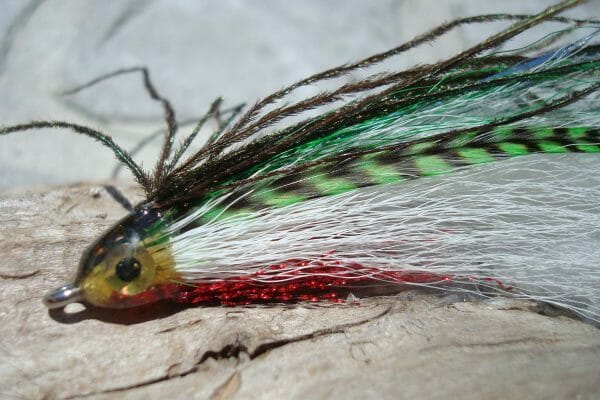
Fly tyers, as they are known, have two things in mind: 1. Design for realism (extra flair is ok). 2. Design to catch the eye regardless of lighting conditions. To meet these tasks, nature is their muse and metallic threads are their secret. They create hand sculpted bugs, worms, eggs, tiny reptiles, miniature fish and other species known to be irresistible to hungry fish of all kinds. Kreinik metallic threads are a fly fishing staple, including the primary ingredient of the hot Kreelex lure, created by Chuck Kraft. I haven’t learned to tie flies yet, and I’m not terribly outdoorsy (“Are you watching your line?” my husband used to say to me when I went fishing with him…”Uh-huh,” I’d reply with my nose in a book…). However I love talking to fly tyers and seeing what they make with the same threads I use for cross stitch, needlepoint, and quilting.
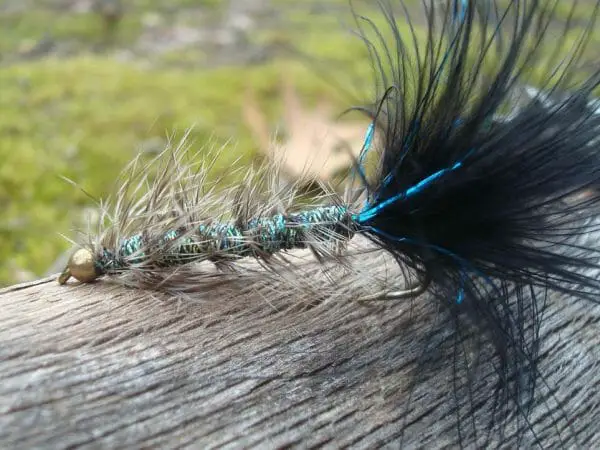
A thread runs through it
It may seem strange to spotlight fly fishing on an embroidery blog, but fly tyers are similar to stitchers in many ways.
Tyers shop for supplies at craft and needlework stores (many tyers “borrow” materials from their stitching spouses). They follow published patterns for specific designs, mimic actual real-life samples, or use their own imagination. Using a base material (hook), the makers weave, wrap, stitch or otherwise attach fibers. The process of creating is as important as the end use. Many find time spent sitting at their table, organizing or using their supplies—yes, playing with the colors, mixing up combinations, experimenting, creating—to be as relaxing as meditation.
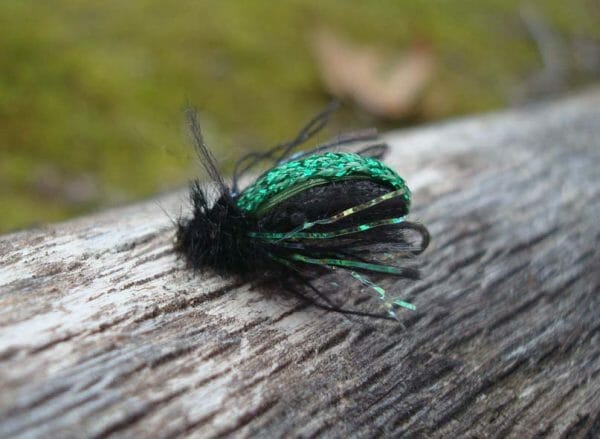
With beads for eyes, silk dubbing for bodies, feathers and metallic threads for tails, for instance, a fly fishing lure is a mixed media, 3-D work of art. Explore the world of these mini marvels and appreciate the creativity, artistry, and passion behind them. I’ve shared links at the end to help you explore more (go adhead, dive in to #flyfishing on Instagram — wow! — It’s like viewing an art show).
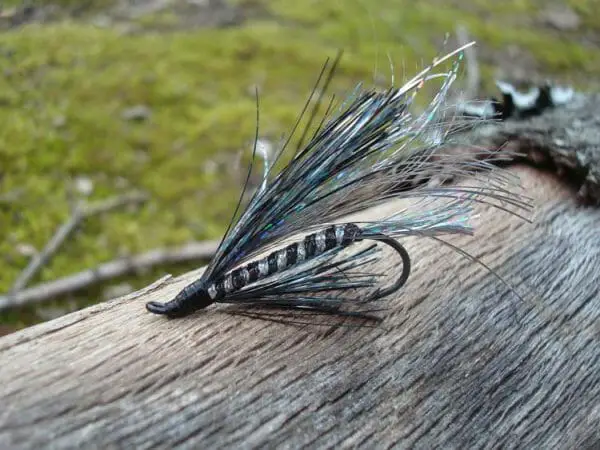
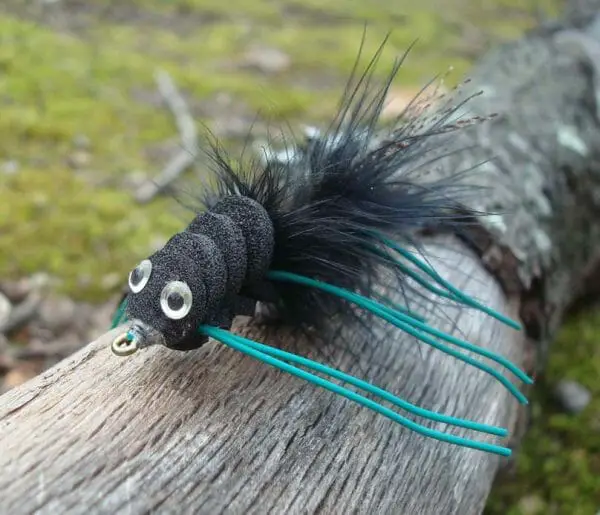
For more information
- Kreinik fly tying starter set: https://www.kreinik.com/shops/Fly-Tying-Kit.html
- Free fly fishing patterns: https://www.kreinik.com/shops/Fly-Fishing-Freebies/
- Video on how to tie the Kreelex fly: http://mossycreekflyfishing.com/2014/10/10/tying-the-kreelex/
- Another good video on the Kreelex: https://vimeo.com/122350117
- To see more extraordinary lures that will blow your mind with details, creativity, and downright beauty, just search #flyfishing or #flytying on Instagram
